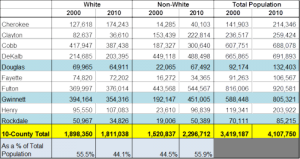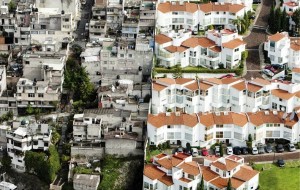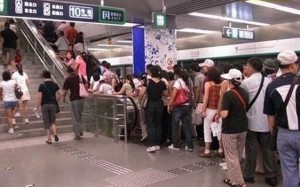Hayes, Melissa Mae, “The Building Blocks of Atlanta: Racial Residential Segregation and Neighborhood Inequity.” Thesis, Georgia State University, 2006.
Using the Census 2000 block group data, Melissa Hayes examines “racial residential segregation in the five core counties of Atlanta.” This study was conducted in order to prove that residential segregation has a direct correlation with discrimination and the inequalities suffered by minorities in the 21st century.

This article is useful for anyone needing a reliable source dealing with racial statistics and segregation in the 21st century. Within this article Hayes makes the direct correlation between class and race pointing out the difference in education opportunities and just all around community preservation. Throughout the article is a variety of comparisons of the traditional white neighborhood versus the traditional black neighborhood.

Hayes also goes on to say, “During the first half of the twentieth century, white Americans, through the denial of access to housing markets in metropolitan areas, created the black urban ghetto (Massey and Denton 1993).” Thus creating the color line and keeping it going from generation to generation. This information can be used in an article addressing the impact historical events still have on society today.
Other interesting facts include how bank lenders made it difficult for African Americans to leave the ghetto because they will not do business with them. Just the same real estate agents demand “unreasonably inflated interests rates“ requiring higher down payments in order for African Americans to even consider leaving the ghetto. This is a great resource to use on legal racial discrimination in the society today.










